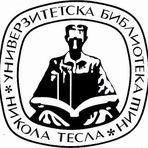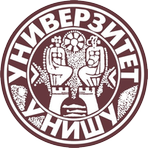Title
Višekriterijumska optimizacija mikromreže korišćenjem V2G tehnologije
Creator
Javor, Dario D. 1992-
CONOR:
24746087
Copyright date
2024
Object Links
Select license
Autorstvo-Nekomercijalno-Bez prerade 3.0 Srbija (CC BY-NC-ND 3.0)
License description
Dozvoljavate samo preuzimanje i distribuciju dela, ako/dok se pravilno naznačava ime autora, bez ikakvih promena dela i bez prava komercijalnog korišćenja dela. Ova licenca je najstroža CC licenca. Osnovni opis Licence: http://creativecommons.org/licenses/by-nc-nd/3.0/rs/deed.sr_LATN. Sadržaj ugovora u celini: http://creativecommons.org/licenses/by-nc-nd/3.0/rs/legalcode.sr-Latn
Language
Serbian
Cobiss-ID
Theses Type
Doktorska disertacija
description
Datum odbrane: 07.07.2024.
Other responsibilities
Academic Expertise
Tehničko-tehnološke nauke
University
Univerzitet u Nišu
Faculty
Elektronski fakultet
Group
Katedra za teorijsku elektrotehniku
Alternative title
Multicriteria optimization of the microgrid using V2G technology
Publisher
[D. D. Javor]
Format
X, 270 listova
description
Biografija autora: list [271].
Bibliografija uz svako poglavlje.
description
Elektrotehnika i računarstvo
Abstract (en)
The subject of the research of this doctoral dissertation is the
application of multicriteria optimization (MCO) and the realization of
computer programs that can be implemented in the smart
management of microgrids with the use of renewable energy sources
(RES), electric vehicles and V2G technology, while achieving a
compromise between economic and environmental goals. The
weighting coefficients of the criteria were determined using the
subjective BWM and AHP methods, and then different types of
energy sources in the microgrid were ranked using the MCO methods
(PROMETHEE, ELECTRE, VIKOR and TOPSIS). The results
obtained using Lingo, Excel and PROMETHEE-GAIA programs
were analyzed. A new two-stage MCO procedure was developed that
enables consumption management in case there are predicted nondeferrable
loads during the day, experimentally measured or
estimated intermittent RES production at the microgrid location,
deferrable consumption, as well as known hourly prices on the
electricity market. The daily consumption curve of the microgrid was
optimized, which achieved a reduction in electricity costs and
investment costs. The daily charging/discharging schedule of electric
vehicles at the microgrid charging station with V2G technology was
also optimized in order to reduce energy costs, taking into account the
characteristics of vehicles and their batteries, as well as the daily
schedule of vehicle use and their availability for charging/discharging.
Microgrid scenarios for different number of vehicles, charger power
and ambient temperature are considered. In doing so, the economic
requirements of microgrid users, vehicle owners, and distribution
companies were taken into account, as well as environmental
requirements for the reduction of emissions of harmful gases and
particle matter in order to preserve the quality of the environment.
The MCO method was developed and applied to rank the fire hazard
of vehicles based on biological and ecological criteria whose weight
coefficients were determined by the BWM and AHP methods.
The results obtained through the application of modern scientific
principles and the methodology of scientific work represent an
original contribution to the analysis and solution of complex
environmental and economic problems that follow the production of
electricity and the functioning of power systems in accordance with
the modern strategy of clean energy.
Authors Key words
mikromreža, obnovljivi izvori energije, električna vozila,
V2G tehnologija, upravljanje potrošnjom, požari vozila
Authors Key words
microgrid, renewable energy sources, electric vehicles, V2G
technology, demand side management, vehicle fires
Classification
(621.316:620.92)+004.4(043.3)
Subject
T 190
Type
Tekst
Abstract (en)
The subject of the research of this doctoral dissertation is the
application of multicriteria optimization (MCO) and the realization of
computer programs that can be implemented in the smart
management of microgrids with the use of renewable energy sources
(RES), electric vehicles and V2G technology, while achieving a
compromise between economic and environmental goals. The
weighting coefficients of the criteria were determined using the
subjective BWM and AHP methods, and then different types of
energy sources in the microgrid were ranked using the MCO methods
(PROMETHEE, ELECTRE, VIKOR and TOPSIS). The results
obtained using Lingo, Excel and PROMETHEE-GAIA programs
were analyzed. A new two-stage MCO procedure was developed that
enables consumption management in case there are predicted nondeferrable
loads during the day, experimentally measured or
estimated intermittent RES production at the microgrid location,
deferrable consumption, as well as known hourly prices on the
electricity market. The daily consumption curve of the microgrid was
optimized, which achieved a reduction in electricity costs and
investment costs. The daily charging/discharging schedule of electric
vehicles at the microgrid charging station with V2G technology was
also optimized in order to reduce energy costs, taking into account the
characteristics of vehicles and their batteries, as well as the daily
schedule of vehicle use and their availability for charging/discharging.
Microgrid scenarios for different number of vehicles, charger power
and ambient temperature are considered. In doing so, the economic
requirements of microgrid users, vehicle owners, and distribution
companies were taken into account, as well as environmental
requirements for the reduction of emissions of harmful gases and
particle matter in order to preserve the quality of the environment.
The MCO method was developed and applied to rank the fire hazard
of vehicles based on biological and ecological criteria whose weight
coefficients were determined by the BWM and AHP methods.
The results obtained through the application of modern scientific
principles and the methodology of scientific work represent an
original contribution to the analysis and solution of complex
environmental and economic problems that follow the production of
electricity and the functioning of power systems in accordance with
the modern strategy of clean energy.
“Data exchange” service offers individual users metadata transfer in several different formats. Citation formats are offered for transfers in texts as for the transfer into internet pages. Citation formats include permanent links that guarantee access to cited sources. For use are commonly structured metadata schemes : Dublin Core xml and ETUB-MS xml, local adaptation of international ETD-MS scheme intended for use in academic documents.


